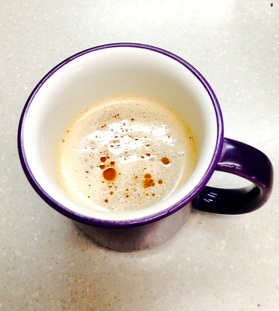
Evening primrose
Topical application works.
Studies show that oils are absorbed into the body both by skin application and by mouth.
What do these oils do?
Oils that we apply to our skin are mostly plant based fatty acids, most notable are omega 3’s, omega 6’s, and omega 9’s. They are all involved in healing and protection of our skin and other parts of our bodies. Omega 3 and 6 fatty acids are considered essential fatty acids, EFA's. Our bodies cannot make them. They work best if they are present in a proper ratio, not too much, not too little, just right.
Omega 3 and Protection from Skin Aging.
Ultra violet light causes an inflammatory response in skin. UV can be from the sun or a tanning bed. Smoking or other toxins can cause inflammation as well. An omega 3, EPA, reduces it by suppressing some of the enzymes that react to toxic stimuli. These enzymes can break down collagen. When skin is injured, there is a 3 step healing process of inflammation, tissue formation, and tissue remodeling. The inflammation should be shut down right after it has served it’s purpose of recognizing the injury. Shutting down inflammation is also a key role of EPA. Without enough EPA, the inflammation lingers and the remaining tissue formation and remodeling are compromised. This protective effect works best in the presence of nutrients such as vitamin C that act as antioxidants, protecting the delicate omega 3. Omega 3 fatty acids are necessary but fragile. EPA is abundant in cold water fish but can also be manufactured in your body from plant omega 3's, albeit inefficiently. If you are a vegetarian or don't like fish, eat plenty of flax oil and other high omega 3 sources. Grass fed butter and meat can be a modest source as well.
Omega 6 and Protection from Infection
On the other hand, omega 6 (linoleic acid) is needed for protection, allowing for an inflammatory response to signal the body's healing system. Without enough, skin is more vulnerable to infection. Skin barrier recovery requires omega 6 high oils. High GLA omega 6 oils such as borage or evening primrose are especially useful for sensitive or chronically irritated skin since GLA has antioxidant properties. Omega 6 is abundant in the food supply and requires no special effort. It would make sense to rub it on damaged, irritated skin.
Omega 9
Omega 9 (oleic acid) has been shown to accelerate wound closure. Omega 9 competes with omega 3 and omega 6 in metabolism and besides, your body can manufacture it. Little or no need to supplement with omega 9. A proper balance is the most desirable situation. It would be safer to consume or apply a variety of oils rather than focusing on one. Cooking only with a high oleic oil, while healthy in moderation, may shift the balance.
The best ratio for your body.
No more than 4 parts omega 6 and at least 1 part omega 3. Excessive omega 9 is unwise too but a lesser concern. This should apply to food or lotion. The diet in North America tends to be heavily loaded with omega 6 and short of omega 3. Ratios of more than 30 to 1 omega 6 to omega 3 are common. Not surprising, because omega 3 will shorten the shelf life of products because it readily oxidizes and becomes rancid.
Dave


 RSS Feed
RSS Feed